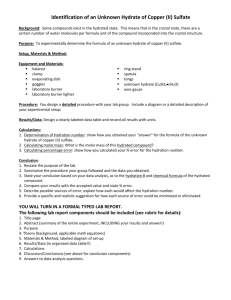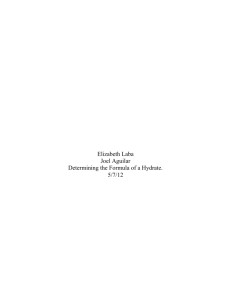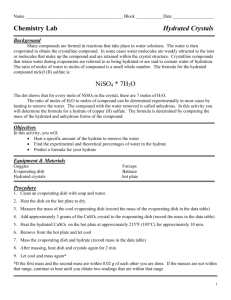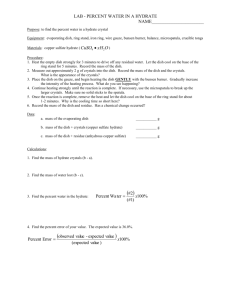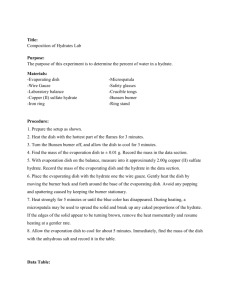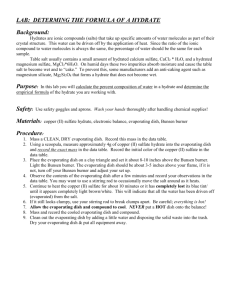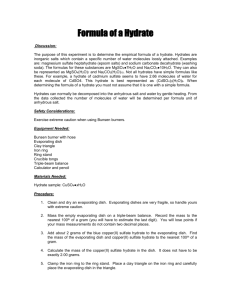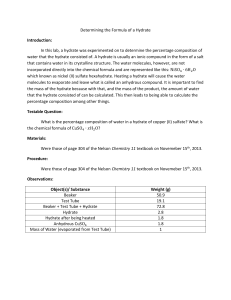Lab #4: Identification of an Unknown Hydrate of Copper (II) Sulfate
advertisement
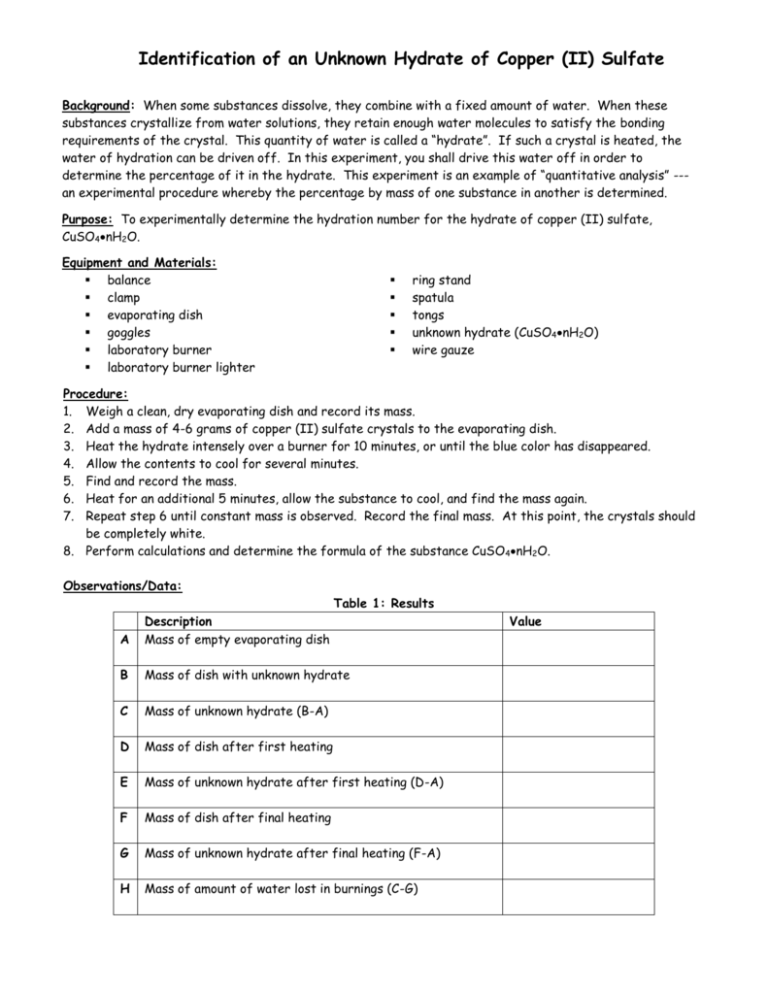
Identification of an Unknown Hydrate of Copper (II) Sulfate Background: When some substances dissolve, they combine with a fixed amount of water. When these substances crystallize from water solutions, they retain enough water molecules to satisfy the bonding requirements of the crystal. This quantity of water is called a “hydrate”. If such a crystal is heated, the water of hydration can be driven off. In this experiment, you shall drive this water off in order to determine the percentage of it in the hydrate. This experiment is an example of “quantitative analysis” --an experimental procedure whereby the percentage by mass of one substance in another is determined. Purpose: To experimentally determine the hydration number for the hydrate of copper (II) sulfate, CuSO4nH2O. Equipment and Materials: balance clamp evaporating dish goggles laboratory burner laboratory burner lighter ring stand spatula tongs unknown hydrate (CuSO4nH2O) wire gauze Procedure: 1. Weigh a clean, dry evaporating dish and record its mass. 2. Add a mass of 4-6 grams of copper (II) sulfate crystals to the evaporating dish. 3. Heat the hydrate intensely over a burner for 10 minutes, or until the blue color has disappeared. 4. Allow the contents to cool for several minutes. 5. Find and record the mass. 6. Heat for an additional 5 minutes, allow the substance to cool, and find the mass again. 7. Repeat step 6 until constant mass is observed. Record the final mass. At this point, the crystals should be completely white. 8. Perform calculations and determine the formula of the substance CuSO4nH2O. Observations/Data: Table 1: Results A Description Mass of empty evaporating dish B Mass of dish with unknown hydrate C Mass of unknown hydrate (B-A) D Mass of dish after first heating E Mass of unknown hydrate after first heating (D-A) F Mass of dish after final heating G Mass of unknown hydrate after final heating (F-A) H Mass of amount of water lost in burnings (C-G) Value Calculations: 1. Determination of hydration number: show how you obtained your “answer” for the formula of the unknown hydrate of copper (II) sulfate. (The hydrate is CuSO4nH2O; what is the value of n?) a) Calculate moles of anhydride by dividing G by the molar mass of CuSO4. b) Calculate moles of anhydride by dividing (C-G) by the molar mass of H2O. c) Divide the moles of water (H2O) by the moles of anhydride (CuSO4) to determine the value of n. d) Write the formula for the hydrate including the hydration number (round to the nearest whole number) 2. Calculating molar mass: What is the molar mass of this hydrated compound? 3. Calculating percentage error: show how you calculated your % error for the hydration number. Carry out the hydration number values to the tenths place for this calculation. For example, the accepted value is 5.0, instead of just 5. Conclusion: 1. Restate the purpose of the lab. 2. Summarize the procedure your group followed and the data you obtained. 3. State your conclusion based on your data analysis, as to the formula and name of the hydrated compound, and the molar mass of this compound. 4. Compare your results with the actual results (CuSO45H2O). 5. Describe possible sources of error.
